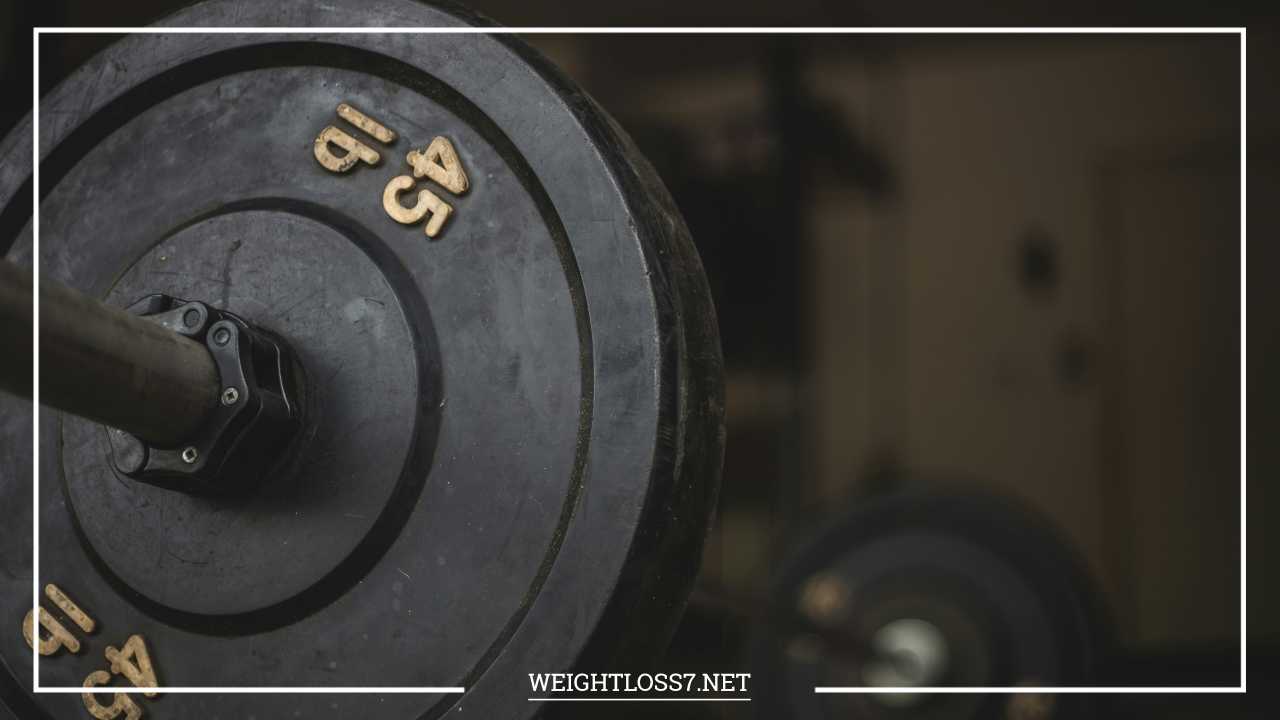How to Start Exercising When You’re Out of Shape

How to Start Exercising
How to Start Exercising if You’re Out of Shape
Embarking on a fitness journey can be intimidating, especially if you haven’t exercised in a long time. Whether you’re returning to physical activity after an extended break or starting from a place of low fitness, it’s important to recognize that you’re not alone—and it’s never too late to make a positive change.
Regular exercise brings a wealth of benefits, including improved physical health, increased energy levels, enhanced mood, and a greater sense of well-being.
This comprehensive guide will help you navigate the process of starting and maintaining an exercise routine, ensuring you feel supported every step of the way.
Setting Realistic Goals
The foundation of any successful fitness journey lies in setting realistic and achievable goals. It’s easy to become overwhelmed by lofty ambitions, but aiming too high too quickly can lead to disappointment and burnout.
Instead, focus on creating small, attainable milestones that can lead you towards larger objectives. Here are some steps to consider when setting your fitness goals:
Understand the Importance of SMART Goals
Utilizing the SMART framework can help you clarify your fitness objectives. SMART stands for:
- Specific: Your goals should be clear and well-defined. Instead of saying “I want to exercise more,” specify “I want to walk for 30 minutes three times a week.”
- Measurable: Incorporate metrics that allow you to track progress. For example, “I want to do 10 push-ups by the end of the month.”
- Achievable: Set goals that are challenging yet realistic. If you haven’t exercised in a while, aiming to run a marathon in three months may not be feasible.
- Relevant: Ensure that your goals align with your overall aspirations. If weight loss is your priority, incorporate activities that promote fat loss and muscle gain.
- Time-bound: Set a timeframe for your goals to create urgency and focus. For instance, “I want to lose 5 pounds in two months.”
Examples of Realistic Fitness Goals
- Short-Term Goals (1-3 months):
- Walk for 15 minutes a day, five times a week.
- Attend a beginner yoga class once a week.
- Complete two bodyweight workouts weekly.
- Mid-Term Goals (3-6 months):
- Increase walking duration to 30 minutes daily.
- Join a community sports team or group fitness class.
- Learn to run a mile without stopping.
- Long-Term Goals (6+ months):
- Participate in a local 5K race.
- Strength train at least three times a week.
- Achieve a balanced weight that supports overall health and fitness.
Choosing the Right Exercise
Selecting the right form of exercise is crucial for maintaining long-term motivation and engagement. The best workout is one that you enjoy and can see yourself sticking with. With countless options available, here are some effective exercises to consider:
Cardiovascular Exercises
Cardio exercises improve heart health, enhance endurance, and burn calories. Some enjoyable options include:
- Walking: One of the simplest forms of exercise. You can start with short walks and gradually increase the distance and pace.
- Swimming: A low-impact activity that works the entire body. Great for those with joint issues.
- Cycling: Whether on a stationary bike or outdoors, cycling is fun and effective for building leg strength and stamina.
- Dancing: From Zumba to ballroom dancing, this activity can be a fantastic way to get your heart pumping while having fun.
Strength Training
Incorporating strength training is essential for building muscle, boosting metabolism, and improving bone density. Start with:
- Bodyweight Exercises: Squats, push-ups, and lunges require no equipment and can be modified for any fitness level.
- Resistance Bands: These are portable and allow for a variety of strength exercises.
- Light Weights: If you’re comfortable, using dumbbells for basic movements can be effective in building strength.
Flexibility and Balance
Incorporating flexibility and balance exercises can enhance overall fitness and reduce the risk of injury. Consider:
- Yoga: Improves flexibility, balance, and mental focus.
- Pilates: Focuses on core strength and stability while enhancing flexibility.
- Tai Chi: A gentle form of martial arts that promotes balance and relaxation.
Finding What Works for You
To find the right exercises, consider the following:
- Trial and Error: Don’t hesitate to try various activities. You may discover something you truly enjoy.
- Listen to Your Body: Pay attention to how you feel during and after workouts. The right exercise should energize you rather than leave you feeling exhausted or in pain.
Finding a Workout Buddy
Having a workout partner can greatly enhance your fitness journey. A buddy can provide motivation, accountability, and camaraderie, making exercise more enjoyable. Here’s how to find the right workout companion:
Where to Find a Workout Buddy
- Friends and Family: Reach out to those who may share similar fitness goals. They might be looking for motivation too.
- Fitness Classes: Join local classes where you can meet like-minded individuals who are also eager to improve their fitness.
- Online Communities: Use social media platforms or fitness apps to connect with others who are on similar journeys.
Benefits of Working Out with a Partner
- Accountability: Having someone to share your goals with makes it harder to skip workouts.
- Motivation: Partners can encourage you when you’re feeling low and celebrate your achievements together.
- Fun Factor: Working out with a friend can turn exercise into a social event, making it more enjoyable.
Creating a Workout Schedule
Establishing a workout schedule is crucial for making exercise a regular part of your life. Consistency helps develop a routine that can lead to lasting changes. Here are some tips to create an effective workout schedule:
Assess Your Availability
- Evaluate Your Week: Take a look at your commitments and determine when you can realistically fit in workouts.
- Choose Time Slots: Select specific days and times for your workouts, treating them like important appointments.
Start with a Balanced Approach
- Mix It Up: Incorporate a combination of cardio, strength training, and flexibility exercises throughout the week.
- Begin with 2-3 Days a Week: If you’re new to exercise, aim for 2-3 sessions per week, gradually increasing frequency as your fitness improves.
Sample Weekly Workout Schedule
| Day | Activity | Duration |
|---|---|---|
| Monday | 20-minute walk | 20 minutes |
| Tuesday | Bodyweight strength training | 30 minutes |
| Wednesday | Rest or gentle yoga | N/A |
| Thursday | 30-minute cycling or swimming | 30 minutes |
| Friday | 15-minute walk + core exercises | 30 minutes |
| Saturday | Group fitness class (dance, yoga, etc.) | 1 hour |
| Sunday | Rest and prepare for the week ahead | N/A |
Flexibility is Key
Life can be unpredictable, so be prepared to adjust your schedule as needed. If you miss a workout, don’t be discouraged; simply reschedule it for another day.
Starting Slow and Gradually Increasing Intensity
If you’re new to exercise or returning after a break, it’s vital to start slow and gradually increase intensity. This approach reduces the risk of injury and helps your body adapt to the demands of physical activity. Here are some guidelines:
Establish a Baseline
Before ramping up your workouts, assess your current fitness level. Determine how long you can comfortably walk, how many push-ups you can do, or how much weight you can lift. This will help you set realistic starting points.
Progressively Overload
As your body adapts to exercise, gradually increase the intensity. Here’s how:
- Increase Duration: Once you can comfortably walk for 15 minutes, aim for 20 minutes, then 30 minutes.
- Add Repetitions: In strength training, gradually increase the number of repetitions or sets.
- Modify Intensity: If you’re walking, incorporate short bursts of brisk walking to elevate your heart rate.
Listen to Your Body
Pay attention to how your body responds to increased intensity. If you experience pain, fatigue, or discomfort, take a step back. Recovery is just as important as the workout itself.
Listening to Your Body
Listening to your body is critical for a successful fitness journey. Everyone’s body responds differently to exercise, so it’s essential to pay attention to how you feel. Here are some tips:
Recognize Signs of Fatigue
If you’re feeling unusually tired or sore, it may be a sign that your body needs a break. Some signs to watch for include:
- Persistent muscle soreness that lasts more than a few days.
- Decreased performance during workouts.
- Increased irritability or mood changes.
Prioritize Recovery
Allowing your body to recover is essential for preventing injuries and promoting long-term success. Here’s how to prioritize recovery:
- Take Rest Days: Schedule regular rest days into your workout routine. Use these days for gentle activities like walking or stretching.
- Get Quality Sleep: Aim for 7-9 hours of restful sleep each night to support recovery and overall health.
- Incorporate Active Recovery: Activities like yoga, foam rolling, or gentle stretching can promote blood flow and reduce muscle tension.
Staying Motivated
Maintaining motivation throughout your fitness journey can be challenging, especially in the early stages. Here are some strategies to help you stay engaged and inspired:
Track Your Progress
Keeping a record of your workouts can help you visualize your progress. Consider:
- Fitness Journals: Write down your workouts, noting the duration, intensity, and how you felt afterward.
- Fitness Apps: Utilize apps that allow you to log workouts, track progress, and set reminders.
Celebrate Small Wins
Recognizing and celebrating your achievements—no matter how small—can boost motivation. Whether you complete your first week of workouts or reach a new personal record, take a moment to acknowledge your success.
Reward Yourself
Incentivizing your fitness journey can keep you motivated. Consider rewarding yourself for reaching milestones with:
- Fitness Gear: New workout clothes or shoes can serve as a great incentive.
- Self-Care: Treat yourself to a spa day, massage, or relaxing evening at home after achieving a goal.
Join a Community
Being part of a supportive community can significantly enhance your motivation. Consider:
- Fitness Classes: Participating in group classes can provide a sense of camaraderie and support.
- Online Forums: Join fitness-focused online communities where you can share experiences, tips, and encouragement.
Incorporating Strength Training
While cardio is essential, strength training plays a vital role in a balanced fitness routine. Here’s why and how to incorporate it effectively:
Benefits of Strength Training
- Builds Muscle: Increases lean muscle mass, which helps to burn more calories at rest.
- Enhances Metabolism: Regular strength training boosts metabolism, aiding in weight management.
- Improves Bone Health: Helps to increase bone density and reduce the risk of osteoporosis.
Getting Started with Strength Training
If you’re new to strength training, start with these guidelines:
- Focus on Form: Prioritize proper form to prevent injuries. Consider working with a trainer for guidance.
- Use Bodyweight Exercises: Start with exercises like squats, push-ups, and lunges, which require no equipment.
- Progress Gradually: Once comfortable, incorporate light weights or resistance bands into your routine.
Sample Strength Training Routine
Here’s a beginner-friendly strength training routine you can try:
| Exercise | Sets | Repetitions |
|---|---|---|
| Bodyweight Squats | 2 | 10-15 |
| Push-Ups (knee or standard) | 2 | 5-10 |
| Plank | 2 | Hold for 20-30 seconds |
| Lunges | 2 | 10 per leg |
| Resistance Band Rows | 2 | 10-15 |
Addressing Common Barriers
As you embark on your fitness journey, you may encounter several common barriers that can hinder your progress. Here are some strategies to overcome these challenges:
Lack of Time
Finding time to exercise can be challenging, but it’s essential to prioritize your health. Here’s how:
- Schedule Workouts: Treat your workouts like appointments and block out time in your calendar.
- Break It Up: If you’re short on time, consider shorter, more intense workouts or break them into smaller sessions throughout the day.
Feeling Tired or Fatigued
Fatigue can be a significant barrier to exercise, but it’s essential to find ways to stay energized:
- Prioritize Sleep: Aim for quality sleep each night to support energy levels and recovery.
- Eat Well: Focus on a balanced diet that provides the nutrients and energy you need to stay active.
Overcoming Self-Consciousness
Many people feel self-conscious about exercising, especially in public spaces. Here’s how to combat those feelings:
- Choose Comfortable Environments: Start exercising at home or in quieter places where you feel at ease.
- Focus on Personal Progress: Concentrate on your improvements rather than comparing yourself to others.
Lack of Equipment
You don’t need a gym membership or expensive equipment to get a good workout. Consider these alternatives:
- Bodyweight Exercises: Many effective workouts require no equipment at all.
- Use Household Items: Water bottles or backpacks filled with books can serve as weights for strength training.
Nutrition and Hydration
Supporting your exercise routine with proper nutrition and hydration is crucial for achieving your fitness goals. Here are some essential guidelines:
Balanced Diet
A balanced diet provides the fuel your body needs for exercise. Aim to include:
- Fruits and Vegetables: Aim for a variety of colors to ensure you get a range of vitamins and minerals.
- Whole Grains: Incorporate whole grains like brown rice, quinoa, and oats for sustained energy.
- Lean Proteins: Sources such as chicken, fish, beans, and legumes support muscle repair and growth.
- Healthy Fats: Include avocados, nuts, and olive oil for overall health and satiety.
Hydration
Staying hydrated is vital for optimal performance and recovery. Here’s how to ensure you’re adequately hydrated:
- Drink Water Throughout the Day: Aim to drink water regularly, not just during workouts.
- Monitor Hydration Levels: If you’re exercising intensely or in hot weather, increase your fluid intake to prevent dehydration.
Rest and Recovery
Rest and recovery are essential components of any fitness regimen. Overtraining can lead to injuries and fatigue, so it’s important to prioritize recovery. Here’s how:
Importance of Rest Days
Incorporating rest days into your routine allows your muscles to recover and rebuild. Here are some tips:
- Schedule Regular Rest Days: Plan at least one or two rest days each week, depending on your workout intensity.
- Listen to Your Body: If you’re feeling particularly fatigued or sore, consider adding an extra rest day.
Focus on Quality Sleep
Quality sleep is essential for recovery. Aim for 7-9 hours of restful sleep each night to support your body’s recovery processes. Consider:
- Establishing a Sleep Routine: Go to bed and wake up at the same time each day to regulate your body’s internal clock.
- Creating a Relaxing Sleep Environment: Minimize noise and light in your bedroom, and consider winding down with calming activities before bed.
Incorporate Active Recovery
Active recovery includes low-intensity activities that promote blood flow and flexibility without straining your body. Consider:
- Gentle Yoga: Incorporates stretching and relaxation techniques to aid recovery.
- Walking: A light walk can help ease muscle soreness and improve circulation.
Final Thoughts
Starting an exercise routine can be daunting, especially if you’re feeling out of shape, but it’s a rewarding journey that offers numerous physical and mental benefits.
By setting realistic goals, choosing enjoyable exercises, and maintaining motivation, you can overcome obstacles and achieve your fitness aspirations.
Remember, every small step counts; progress takes time, and it’s essential to be patient with yourself. Embrace the process, listen to your body, and celebrate your achievements along the way.
No matter where you start, know that it’s never too late to take control of your health and well-being. Get moving today, and you’ll be amazed at what you can accomplish!

















